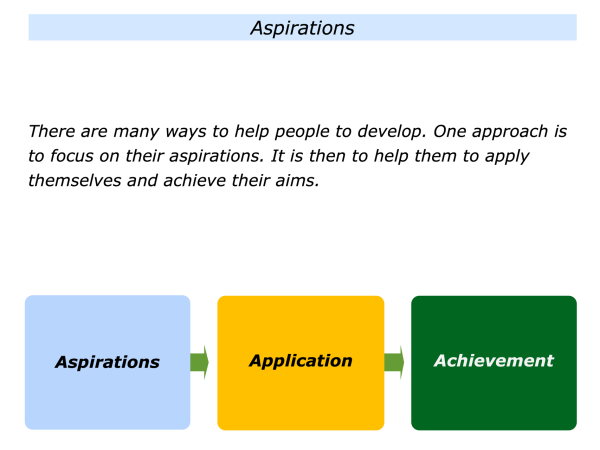
There are many ways to help people to develop. One approach is to focus on their abilities and aspirations. It can then be to help them to apply themselves and achieve their aims. Let’s explore these themes.
Aspirations
Every person has aspirations. They may have passions they want to follow, challenges they want to solve or goals they want to achieve. They can be helped to translate these into action and achieve success.
Here are some of the questions that it is possible to explore: a) before meeting a person; b) when meeting them, seeing them in action or seeing examples of their work.
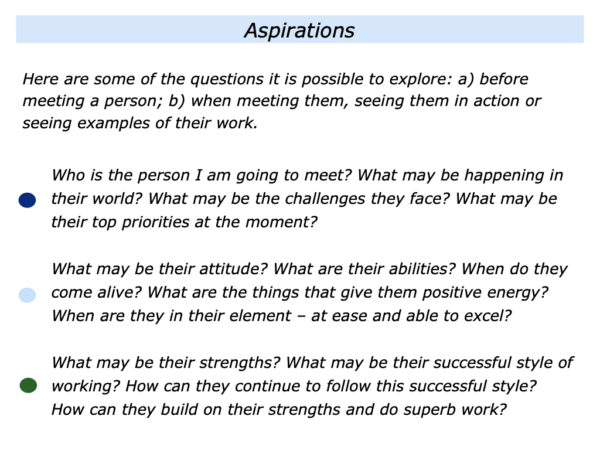
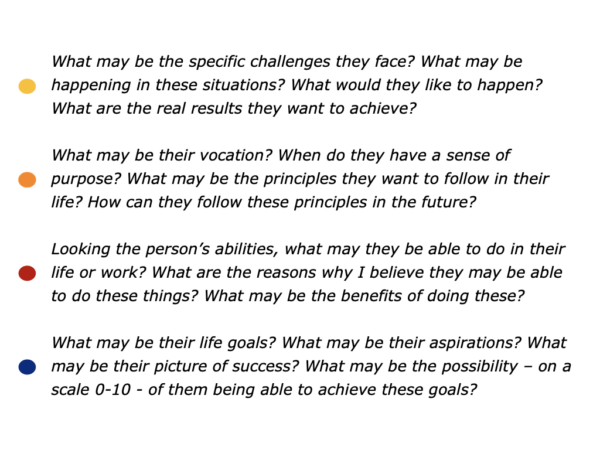
There are many other themes it is possible to explore when focusing on a person’s aspirations. Whatever route is followed, it is important:
To create an environment in which the person feels at ease and able to explore their aspirations;
To encourage the person to explore and then, when they feel ready, to settle on the goals they want to achieve;
To play back your understanding of the person’s aims and make sure you are clear on their picture of success.
Let’s assume that a person has clarified their aspirations. When appropriate, it can then be time to move on to the next stage.
Application
Many people have aspirations but the key is to apply themselves properly when working to achieve their aims. Bearing in mind what they can control in the situation, this often involves then taking the following steps.
First, to clarify the real results to achieve and translate these into a clear picture of success.
Second, to clarify and rehearse the strategies they can follow to give themselves the greatest chance of success.
Third, to follow these strategies, perform superb work and do their best to achieve the picture of success.
Imagine that you want to help a person to take these steps. How to make this happen? One approach is to explore the following themes when helping them to achieve their aims.
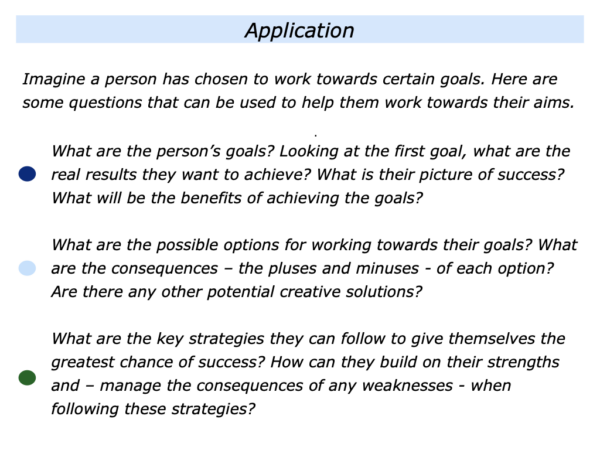
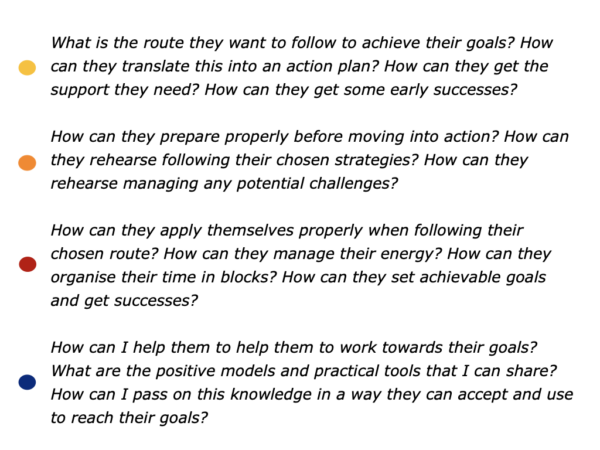
Let’s assume a person has moved into action. When appropriate, it can be time to move on to the next stage.
Achievement
Imagine that the person is following their chosen strategies. It is important for them to keep reading reality. They can build on what is working and also tackle areas for improvement.
There may also be situations where they need to buy time to manage unexpected events. When appropriate, it can be useful to help them to find and follow their chosen route for tackling such challenges.
A person is also more likely to reach their goals if they know their successful pattern for finishing. They can follow this – plus maybe add other skills – to achieve their picture of success.
How to help a person to take these steps? One approach is to focus on the following themes and help them to work towards their aspirations.
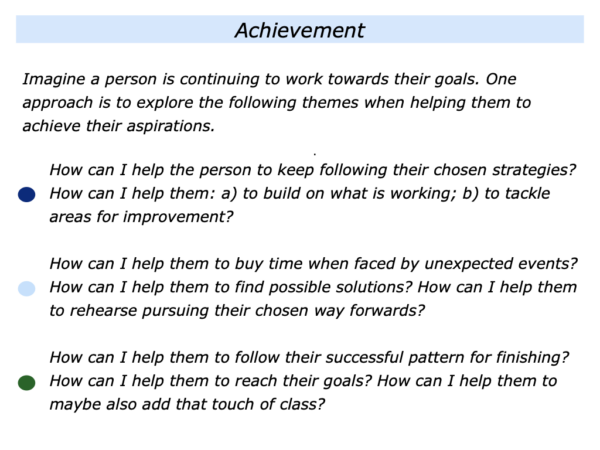
There are many ways to help a person to develop. One approach is to help them to focus on their abilities and aspirations. It then to help them to apply themselves and achieve their goals.
Looking ahead, can you think of a situation where you may want to follow elements of this approach? If you wish, try tackling the exercise on this theme. This invites you to complete the following sentences.
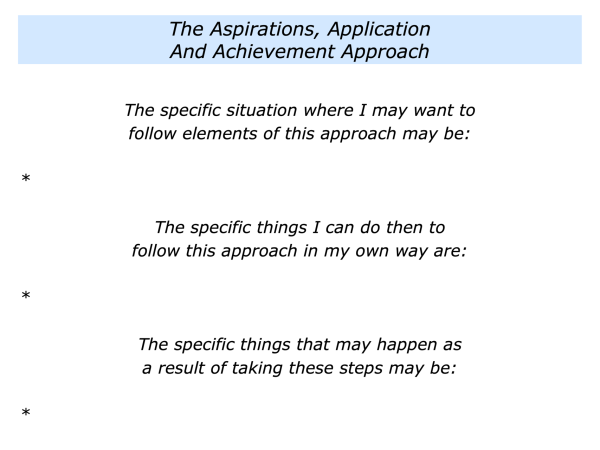


Leave a Reply